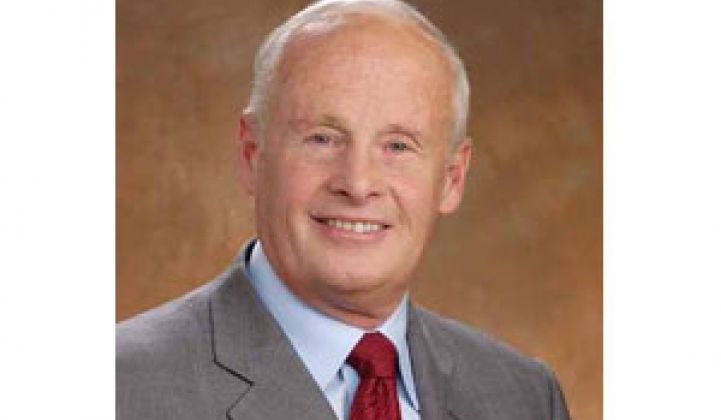The growth of renewable energy developments has highlighted the need for energy storage technologies, yet almost none of them have been proven for large, commercial deployment.
The dilemma has created opportunities for a host of startup companies, including battery makers and energy storage service providers. MegaWatt Storage Farms, a company founded nearly two years ago that has kept its activities quiet, is one of the new companies eyeing the market.
MegaWatt Storage seeks to develop and operate storage centers for utilities, which are seeking ways to store energy generated in times of low demand, such as at night, and make it available during the day, when demand is high.
The growth of wind and solar power has spurred interest in energy storage. Wind farms typically generate more electricity at night while solar power plants are active during the day.
The company, based in Los Altos, Calif., is still lining up customers, said Ed Cazalet, co-founder and vice president of MegaWatt Storage and a panelist at the AlwaysOn GoingGreen Conference near San Francisco on Wednesday. Gov. Arnold Schwarzeneggar appointed Cazalet to serve on the Board of Governors for the California Independent System Operator from 2004 to 2007.
MegaWatt Storage is self-funded so far, but the company is looking for new funding, said Cazalet, who declined to name a figure. The company has developed software for managing energy storage facilities, which could cost an estimated $3 million to $4 million per megawatt to build and run a storage farm using sodium-sulphur batteries, he said.
Greentech Media took him aside after the panel to get his thoughts on various energy storage technologies.
Q: What are some of the storage technologies being used or considered by utilities today?
A: There are basically three types of technologies. One is [pumped storage hydroelectricity] and we already have a lot of it in the country. But the number of sites for them is small, and they can take 10 to 15 years to build. Plus you have to deal with the environmental challenges to get the rights to build them.
There is compressed air storage, but you usually have to find underground reservoirs for the technology, and those reservoirs might leak. Most of the compressed air uses fossil fuels to produce it, so it's not 100 percent clean.
Then there are batteries made with lithium ion and sodium sulphur, and flow batteries that use electrolytes stored in tanks.
Q: During the panel discussion, you mentioned that lithium-ion batteries would primarily be used for powering cars in the next 10 to 15 years. Do you see the technology being used for grid management?
A: It's good for grid energy storage today, but it tends have high cost. The lithium-ion systems proposed for the grid now typically have 15 minutes of storage, so they can provide some services for utilities and grid operators. They can charge and discharge fairly quickly, so they are good for feeding short bursts of energy on the grid.
Sodium-sulphur and flow batteries can have many hours of storage and they are cheaper per unit of energy.
Q: What types of battery technologies are most promising?
A: It's still too early for utilities to decide. Many utilities are experimenting with a lot of technologies. There are no commercial demonstrations of lithium-ion batteries where they are deployed in high volumes. We don't know their reliability.
Flow batteries are just becoming available, but there is no sufficient data on the life and cost manufacturing them in high volumes.
Sodium-sulphur batteries have been around for a while and the cost is well known. AEP [American Electric Power Co.] has been the most aggressive and primarily uses sodium sulphur storage. It intends to install quite a bit of it.
Q: Given that more homeowners are putting solar panels on their rooftops, do you anticipate a new market for residential energy storage soon?
A: The challenge of having a storage pack in every home is the maintenance and cost. I think there are other residential applications, such as neighborhood storage.



